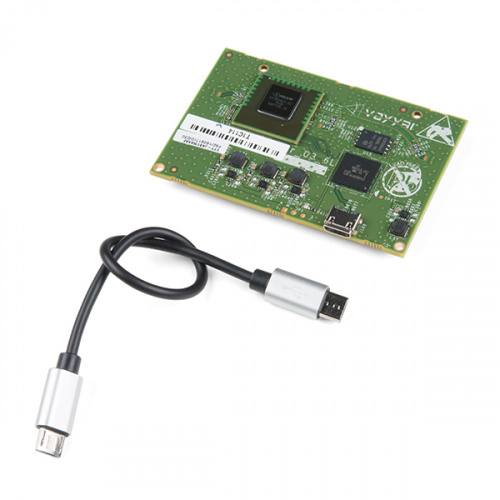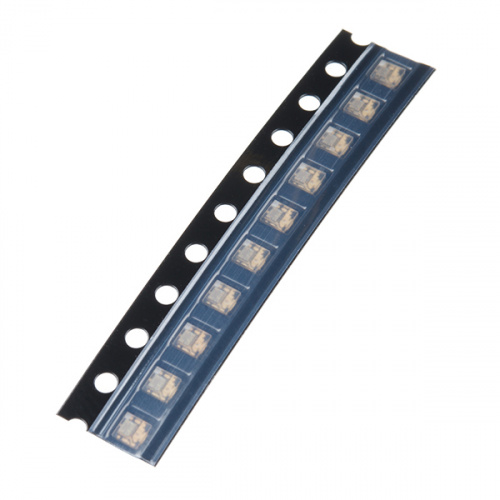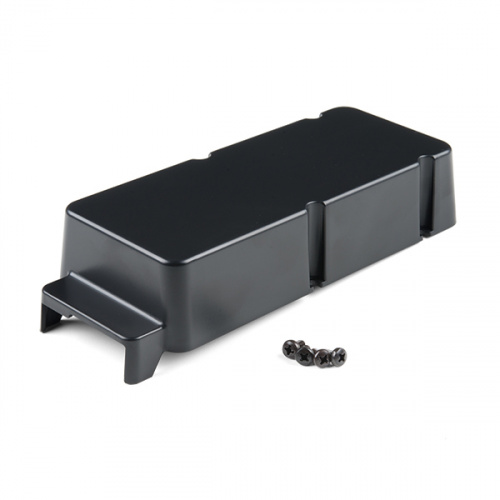G'day, everyone, and welcome to another new product-filled Friday Product Post! Though not a cute little wallaby, we do have two versions of the new Walabot radio frequency tool that allows you to see through walls (more on that further down), a strip of 10 teeny-tiny APA102-2020 LEDs, as well as a large back panel for your SmartiPi Touch. All of these fine new products are available right now, so let's dive in and take a closer look!
Look through walls like Superman!
The Walabot Developer is a programmable 3D sensor inside a protective enclosure that looks into objects using radio frequency technology. This technology breaks through known barriers, bringing highly sophisticated sensing capabilities to your fingertips. This Walabot Developer version uses an 18-antenna array to illuminate the area in front of it and sense the returning signals. The signals are produced and recorded by a VYYR2401 A3 System-on-Chip integrated circuit. They are then communicated to a host device (like your phone or computer) using a USB interface, which is implemented using a Cypress controller.
Getting Started with Walabot
February 15, 2018
See through walls, track objects, monitor breathing patterns, and more using the power of radio frequency with the Walabot! In this tutorial, we will explore Walabot’s features using the Software Demo Kit (SDK) on Windows and the Application Programming Interface (API) on Linux-based distributions for embedded projects.
If you are looking for something less expensive than the Walabot Developer, check out the Starter version instead. This little guy is very similar to the Developer above, but instead of an 18-antenna array, the Starter only has three antennas. Also, this Walabot can't see through walls like its older sibling, but it is still capable of short-range imaging as well as target and breathing pattern detection.
This version of the APA102 is an astoundingly tiny, 2020-sized (2x2mm) SMD LED. With an integrated control circuit embedded, the APA102-2020 is incredibly bright and colorful. If you look really closely, you can see the tiny gold chip hidden in there, along with minuscule gold wires connecting the chip to the LED. This miniaturized version of the APA102C LEDs found in our Lumenati line is perfect for applications needing a bit of color while not possessing a lot of real estate.
Here is a large cover to protect all of the HATs that you have for the Raspberry Pi that's attached to your SmartiPi Touch. This easy-to-install back cover screws into the back VESA mounts on the SmartiPi Touch with the four included screws. The cover allows you to protect HAT boards and other electronic components that you might want for your project. Each is made out of ABS plastic and can be easily cut, drilled or otherwise modified for any application or use. Additionally, the cover helps protect the ethernet and USB ports on the Pi B+, 2 and 3.
Alrighty, ladies and gentlemen, that's it for this week's diverse Friday Product Post! As always, we can't wait to see what you make with these products! Shoot us a tweet @sparkfun, or let us know on Instagram or Facebook. We’d love to see what projects you’ve made!
Thanks for stopping by. We'll see you next week with even more fantastic new products!










Good work 👏
Can the less expensive one see through some distance of a material albeit not a wall thickness?
Unfortunately, the Walabot Starter has 3x antennas. It is only able to do basic range measurements and detect your breathing patterns. This is outlined as a note in the tutorial => Getting Started with Walabot: Example SDK | Imaging - Short Range.
The Walabot Developer has 18x antennas so it has more features available. Assuming that the wall is not made of metal, the Developer will be able to detect how far the material is behind the wall up to about 4". The depth is just an estimate.
About the wallabot starter, what does "breathing pattern detection" mean? Some sort of cyclical motion detection?
Do you have any practical use case examples for either wallabot unit? If not, they seem to just be expensive toys?
There are some examples provided using Walabot's SDK and API. I have outlined it in the tutorial to get started here => Getting Started with Walabot .
Breathing Patterns
I refer to breathing patterns in the tutorial as inhaling and exhaling. When testing the Walabot, it was able to see when I was breathing. The graph from the SDK shows when I inhaled air. The max amplitude was when I was not able to take any more air in.
When exhaling, the graph would dip.
The Walabot may be able to detect small movements and gestures depending on the condition. Just after taking the screen shot (not shown in the graph above), there was a small, instantaneous spike indicating when I pressed the mouse.
Applications
Further down the tutorial in the Resources and Going Further, I have linked Walabot's GitHub Repository and Projects from the Community. Some tutorials are completed while others are still documenting. There are many uses but here are some practical applications that I pulled to give you an idea:
I hope the examples illustrate a few uses and applications. =)